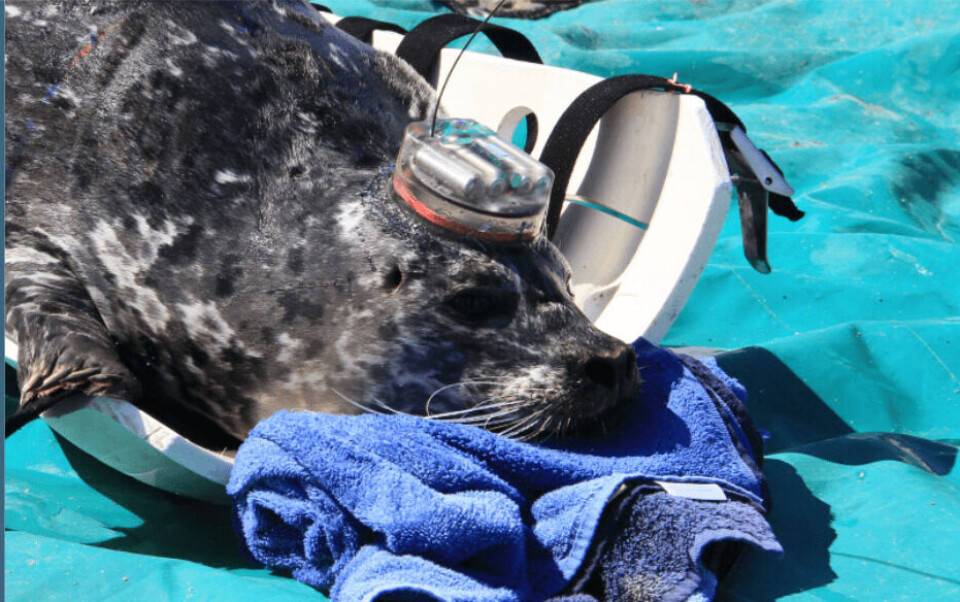
Seal cams and the salmon crash
A massive multi-year project in BC - which includes a novel means of monitoring seal predation levels - is trying to understand the reasons behind the population crashes of Chinook and coho salmon in the Salish Sea.
One of the most striking examples of reduced biodiversity in the Strait of Georgia (SoG) is the loss of chinook and coho salmon abundance during the past 20 years – between 1993-1995, chinook and coho fisheries crashed, with about $750 million losses to local communities.
The SoG is BC’s inland sea, located between Vancouver Island and the mainland. The Georgia Basin and tributaries are home to three-quarters of the population of BC, many of whom use the area for a wide variety of recreational and commercial activities. In the past, these fisheries were amongst the most valuable in Canada, but that changed dramatically in the mid-1990s. Catches that annually had numbered in the hundreds of thousands to a million fish decreased to a fraction of those levels, and despite continued investments in hatchery programs and significant reductions in fishing pressures, the populations have not recovered.
Recent catches in the Strait have been less than one-tenth of past levels, resulting in a ban on retention of wild coho salmon and historically low catches of chinook salmon. These losses have been well acknowledged, particularly in communities surrounding the Strait; yet understanding causes of the declines have remained a mystery.
Promoting the restoration of these fisheries is invaluable to BC. However, the SoG is also part of a larger ecological zone contiguous with the Puget Sound and the Strait of Juan de Fuca; in combination, this region is referred to as the Salish Sea. As in Canada, the American portion of the Salish Sea is also a human population center with extensive development, and many similar problems for Pacific salmon. Many fisheries in these joint waters are considered under the Pacific Salmon Treaty (1985) between the United States and Canada. Decreased production of salmon in the Salish Sea has severely limited fishing opportunities and presents numerous issues under the Treaty.
Six years ago, the Pacific Salmon Foundation (PSF) was asked to investigate why the production of chinook and coho salmon within the SoG crashed during the 1990s and has still not recovered. After a workshop that brought together over 100 scientists in the field, the Salish Sea Marine Survival Project (SSMSP) was borne.
Dr Brian Riddell, CEO and President of the Pacific Salmon Foundation (PSF), said: “What is limiting the marine survival of the juvenile coho salmon that go to sea?” Although over-fishing was considered to be a problem initially, after DFO put a moratorium on the commercial catch of coho salmon in the late 90’s, the stocks still did not return. “Over-fishing doesn’t explain it”, said Riddell, “There is clearly a change in the ecosystem in the Strait of Georgia that we don’t understand.”
The SSMSP is a 5-year, $20 million ecosystem-based, multi-disciplinary project involving government, universities, private consultants, local communities, and not-for-profit groups. The project is coordinated by two nonprofits: Seattle-based Long Live the Kings (LLTK) and the Vancouver-based PSF. Altogether the project involves more than 150 scientists and technical staff from more than 40 federal and state agencies, First Nations, universities, industry, and non-profit organizations from the US and Canada.
The SSMSP was developed to identify the factors determining annual production of chinook, coho salmon, and steelhead trout in the Salish Sea. It was initiated in response to the precipitous declines in chinook, coho and steelhead production, but also because of other ecological changes in the Salish Sea, and increasing evidence that the overall survival of juvenile salmon at sea is largely determined in the first few months after entry to the marine environment.
The project focuses on issues affecting juvenile salmon survival while they are in the SoG, from river deltas to the open oceans. This includes understanding the condition of fish entering the marine environment to determine if impacts occurring prior to their marine residence are reducing survival.
Over the last year, 33 projects were initiated in the SoG, engaging 30 different partners. In these project, several new approaches and technologies were deployed to collect data at an extremely high level of detail.
For example, by using PIT tags, the SSMSP can monitor both juvenile outmigration and returning adult salmon. Although biologists believe that juvenile salmon die at a very high rate for the first months at sea but the rate declines as salmon grow, the ability to measure this mortality is very limited. This part of the project will allow researchers to determine the period of highest mortality.
A very large impact on juvenile salmon populations is predation – particularly by seals. A novel approach has been implemented to characterize sources of seal predation on salmon. This initiative combined “seal beanies” developed by the UBC Marine Mammal University with backpacks that provide 3-D tracking of seal movements. The new technology, in combination with 40,000 PIT tags applied to hatchery coho, enabled the first estimation of seal predation rates on juvenile salmon. The project uses genetic techniques to detect salmon-specific DNA in the seal scat while the seal beanies track exactly how many tagged salmon are consumed by the seal. When a seal feeds on a tagged salmon, the beanie detects the tag and registers it in memory. When the seal is out of water, the information captured by the beanie is automatically transmitted to a satellite and then down to the labs at UBC. The initial results indicate that feeding on juvenile salmon may be an opportunistic behavior acquired by a limited number of seals.
“We have an incredible array of expertise in the Salish Sea”, said Riddell, “We have the people, we have the capacity in the labs, we have the vessels. We’ve never made the effort to put it together, and we’ve never had the leadership or the funds. Now we do. No more excuses.”






















































